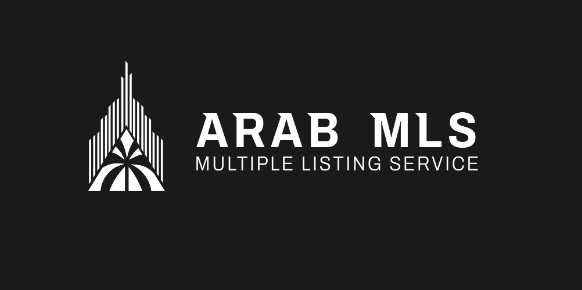Listing a home on MLS offers several advantages, such as broader exposure, increased visibility, and access to a network of real estate professionals. It is an effective way to market a property to potential clients and increase the chances of receiving offers. Moreover, MLS allows accurate and up-to-date information about a property to be shared with interested parties.
To list a home on MLS, a seller needs to work with a licensed real estate agent or broker who has access to the MLS database. Once the listing is created, it will be displayed on various real estate websites that pull data from the MLS database.
Understanding MLS

Definition and Purpose of MLS
MLS is a comprehensive collection of properties listed for sale in a particular geographic region. Real estate professionals maintain the service to help clients buy or sell property. The purpose of MLS is to provide a centralized location where real estate agents can access information about properties for sale and to help buyers and sellers connect. To learn more about MLS, check out What is MLS?
Benefits of Listing on MLS
Listing a property on MLS provides exposure to many potential buyers. When a property is listed on MLS, it is visible to thousands of real estate agents and their clients. This increased visibility can help sellers find a buyer more quickly and can help buyers find the right property for their needs.
In addition to increased visibility, listing a property on MLS can also provide valuable information about the property. MLS listings typically include essential property information, such as exterior and interior details, asking price, and the number of bedrooms and bathrooms. This information can help clients choose which properties to view and can help sellers price their properties appropriately.
Overall, listing a property on MLS can be a valuable tool for buyers and sellers. It provides increased visibility and access to information, which can help facilitate the buying and selling process.
Arab MLS

For the first time in the Middle East, Arab MLS is a multiple listing service platform that will completely revolutionize property listing in the MENA Region. It provides various services, including IDX and geolocation. This innovative service will enable licensed real estate professionals to list properties and connect with interested audiences and other real estate professionals, transforming the real estate industry. To learn more about Arab MLS, visit their website: https://arabmls.org/.
Preparing Your Home for Listing
Before listing a home on MLS, it is essential to prepare it properly. This includes making necessary repairs, cleaning, and staging the house to make it look its best. In addition, creating an appealing listing description and using professional photography and virtual tours can help attract potential buyers.
Home Improvement and Repairs
Improvements and repairs include fixing leaks, replacing broken fixtures, and repainting walls if necessary. It is also essential to declutter the home and move any personal items to make it look more spacious and neutral.
Professional Photography and Virtual Tour
Professional photography and virtual tours can showcase the home’s best features and attract potential buyers. High-quality photos can make the house look more appealing and help buyers visualize themselves living in the space. Virtual tours can also give buyers a better sense of the layout and flow of the home.
Creating an Appealing Listing Description
Creating an appealing listing description is essential to attract potential buyers. The description should highlight the home’s best features and include details such as the number of bedrooms and bathrooms, square footage, and any unique or desirable features. It is also essential to use descriptive language and avoid cliches or exaggerations.
Choosing the Right Agent

When listing a home on MLS, choosing the right agent is crucial. Here are some essential factors to consider when evaluating agents:
Full-Service vs. Flat-Fee Agents
Homeowners have the option to work with either full-service or flat-fee agents. Full-service agents typically offer various services, including marketing, negotiating, and handling paperwork. On the other hand, flat-fee agents provide a more limited set of benefits for a lower fee. Homeowners comfortable taking some aspects of the selling process independently may prefer to work with a flat-fee agent.
Evaluating Agent Credentials
Homeowners can verify an agent’s credentials by searching their name in the state’s real estate licensing database. Additionally, homeowners can evaluate an agent’s experience by reviewing their online presence, website, and social media profiles.
Understanding Commission Structures
Commission structures can vary among agents and brokerages. Typically, the seller pays a commission to both the listing agent and the buyer’s agent. Understanding the commission structure upfront and negotiating it with the agent before signing the agreement is essential.
Pricing Your Home
When selling a home, pricing it accurately is one of the most critical factors. A home that is priced too high may sit on the market for a long time, while a home that is priced too low may sell quickly but not for its total value. Here are some tips on how to price your house appropriately.
Conducting a Comparative Market Analysis
One of the best ways to determine your home value is to conduct a market analysis (CMA evaluations of similar houses that have recently sold in your area). It considers factors such as the size of the home, the number of bedrooms and bathrooms, and the location. By analyzing the selling prices of these similar homes, you can get a good idea of what your house is worth.
Setting a Competitive Price
Once you have completed your CMA, you can use that information to set a competitive price for your home. It’s important to remember that a competitive price doesn’t necessarily mean the highest price. Pricing your house, too, actually turns off potential buyers. Instead, aim for a price that aligns with the market and will attract buyers.
Pricing assistance tools are available if you need more time to conduct a CMA. For example, some real estate agents offer pricing assistance as part of their services.
Finally, it’s essential to consider your equity when pricing your home. If you owe more on your mortgage than your house is worth, you may need to rent a higher-priced home to cover your mortgage. On the other hand, if you have a lot of equity in your residence, you may be able to price it lower to attract buyers.
Listing on MLS

Listing a home on MLS is a crucial step in the selling process. It allows the agent to connect with a large audience of potential clients. Here are some key aspects to consider when listing a home on MLS.
The Listing Agreement
Before a home can be listed on MLS, the seller must sign a listing agreement with a real estate agent. This agreement outlines the terms of the sale, including the commission rate and the length of time the home will be listed on MLS.
MLS Entry and Details
Once the listing agreement has been signed, the real estate agent will enter the details of the home into the local MLS database. This includes information such as the number of bedrooms and bathrooms, square footage, and unique home features. The seller must ensure that all details are accurate and up-to-date, as potential buyers will view this information.
Maximizing Listing Reach
To maximize the reach of the MLS listing, the seller can take additional steps to promote the home. This includes adding high-quality photos and videos to the listing, highlighting any unique features of the home, and sharing the listing on social media. Additionally, some websites allow homeowners to list on MLS for free, which can help increase the home’s visibility to potential buyers.
Overall, listing a home on MLS is essential in the selling process. By understanding the listing agreement, ensuring accurate MLS entry and details, and maximizing listing reach, sellers can increase their chances of finding the right buyer for their home.
Marketing Your MLS Listing

When selling a home, marketing is a critical component of the process. A well-marketed listing can attract more potential clients. Here are some practical ways to market your MLS listing:
Using Online Platforms
Online platforms such as Zillow, Trulia, Redfin, and Realtor.com are excellent resources for marketing your MLS listing. For example, you can create a detailed listing with high-quality photos, videos, and virtual tours. You can also include information about the property’s features, location, and price.
Social Media and Networking
Social media is also a great marketing tool for listing. Platforms like Twitter, Facebook, and Instagram help you engage with your audience and generate interest in your property. You can upload videos and images of your home and provide additional information about the neighborhood and community.
Open Houses and Showings

Open houses and showings are essential for marketing your MLS listing. It lets potential clients view your property in real life and see its layout, features, and condition. You can work with your real estate agent to schedule open houses and showings at convenient times for buyers. Make sure your home is clean, well-staged, and ready to impress.
Overall, marketing your MLS listing is all about exposure. The more exposure your home gets, the more likely it is to attract potential buyers and generate interest. By using online platforms, social media, networking, and hosting open houses and showings, you can increase your home’s visibility and maximize its chances of a successful sale.
Negotiating Offers
When sellers list their homes on the Multiple Listing Service (MLS), they open themselves up to multiple offers from potential buyers. Here are some essential things to keep in mind when negotiating offers.
Evaluating Buyer Proposals
It’s essential for sellers to carefully evaluate each buyer’s proposal to determine which offer is the most favorable. This can include factors such as the offer price, the buyer’s financing, and any contingencies or terms contained in the offer.
Sellers should also consider the strength of the buyer’s offer. For example, a cash offer may be more attractive than an offer with financing contingencies.
Negotiation Support from Your Agent
A seller’s real estate agent can provide valuable support during negotiation. They can help the seller evaluate each offer and determine the best action.
The agent can also help the seller negotiate with the buyer’s agent to reach a mutually agreeable deal. This can include discussing commission fees, closing costs, and other terms of the sale.
Finalizing the Sale
Once the seller has accepted an offer, several steps remain to finalize the sale. This can include inspections, appraisals, and other contingencies.
The seller’s agent can help manage these steps to ensure the sale progresses smoothly. They can also help the seller navigate what may arise during the closing process.
Overall, negotiating offers can be a complex process, but with the proper support and guidance, sellers can successfully navigate the sale of their home on the MLS.
Alternatives to Traditional MLS
Many homeowners opt for the traditional route when selling a home by listing their houses on a Multiple Listing Service (MLS) through a real estate agent. However, there are alternative options for homeowners who want to save money on commission fees or have more control over the selling process.
For Sale By Owner (FSBO) Platforms
One popular alternative to traditional MLS is to list a property on a For Sale By Owner (FSBO) platform. FSBO platforms allow homeowners to list their property without the help of a real estate agent. Some popular FSBO platforms include Houzeo and Clever Real Estate.
Discount and Online Brokerages
Another alternative to traditional MLS is to work with a discount or online brokerage. These brokerages offer lower commission rates and may provide additional services such as virtual tours and professional photography. Some popular discount and online brokerages include Houwzer and Redfin.
MLS Alternatives and Technology Tools
There are also several MLS alternatives and technology tools available to homeowners. Flat fee MLS listing services allow owners to list their homes on the MLS for a one-time fee instead of paying a commission to a real estate agent. Agent matching services connect homeowners with local real estate agents who offer discounted commission rates. Technology tools like virtual staging and 3D tours can help homeowners showcase their property online and attract potential buyers.
Overall, homeowners can consider several alternatives to traditional MLS when selling their property. Researching and comparing these options is essential to determine the best fit for their needs and goals.
Frequently Asked Questions
What are the steps to list a property on the Multiple Listing Service (MLS)?
To list a property on the MLS, a homeowner must typically work with a licensed real estate professional with MLS access. Once the listing is live, other agents and potential buyers can view the property information and schedule showings.
What are the costs associated with MLS listings for homeowners?
The costs associated with MLS listings can vary depending on the real estate agent or listing service used. Traditional agents typically charge a commission fee, a percentage of the sale price. Flat fee MLS listing services, on the other hand, charge a one-time fee for listing a property on the MLS.
Is listing a home on MLS without a real estate agent possible?
Technically, only licensed real estate agents have direct access to the MLS. However, some flat fee MLS listing services allow owners to list their property for a one-time fee without the assistance of a traditional real estate agent. Homeowners should research and compare different options to determine the best fit for their needs.
What are the benefits of using an MLS listing for a for-sale-by-owner property?
An MLS listing for a for-sale-by-owner property can increase visibility and exposure to potential buyers and real estate agents. By listing on the MLS, the property information is shared with an extensive network of agents and websites, which can help attract more interested buyers.
What should I prepare before uploading my home information to the MLS?
Before uploading home information to the MLS, homeowners should ensure accurate and up-to-date information about the property, including the number of rooms, maintenance, and additional data. They should also have high-quality photographs of the property to include in the listing.













